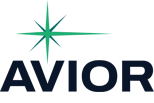Small Business Retirement Plans: Choosing the Right Strategy for Your Company
Small business owners often find themselves so focused on growing their companies that retirement planning takes a back seat. But here’s something that might change your perspective: offering the right retirement plan can actually help your business grow while reducing your tax burden. With more than 40% of small employers not offering retirement benefits and SECURE 2.0 creating new tax incentives worth up to $5,000 annually, there’s never been a better time to explore your options.
The challenge isn’t whether you should offer a retirement plan – it’s figuring out which one makes the most sense for your business size, budget, and goals. Each plan type comes with different contribution limits, administrative requirements, and costs. The good news is that understanding your options doesn’t have to be complicated, and the right choice can provide benefits that extend far beyond just retirement savings.
Key Takeaways
- More than 50% of small business employers don’t offer retirement benefits, creating opportunities for businesses that do to attract and retain top talent
- SECURE 2.0 offers tax credits covering up to 100% of startup costs for eligible small businesses, making retirement plans more affordable than ever
- Employer contributions are tax-deductible up to 25% of total participant compensation, providing immediate tax benefits
- The right retirement plan can help reduce employee turnover and recruitment costs while building long-term wealth for business owners
- Plan options range from simple SEP IRAs for solo entrepreneurs to comprehensive 401(k)s for growing companies
- Contribution limits for 2025 range from $16,500 for SIMPLE IRAs to $70,000 for SEP IRAs and Solo 401(k)s
Understanding Your Retirement Plan Options
Small business retirement plans aren’t one-size-fits-all solutions. The best choice depends on your company size, whether you have employees, your budget, and how much you want to contribute. Let’s explore the main options available.
SEP IRA (Simplified Employee Pension)
A SEP IRA works well for businesses of any size, but it’s especially popular with solo entrepreneurs and small companies with few employees. The plan allows you to contribute up to 25% of each eligible employee’s compensation or $70,000 for 2025, whichever is less.
The key advantage of a SEP IRA is its simplicity. There’s minimal paperwork, no annual filing requirements, and setup costs are typically low. However, if you contribute for yourself, you must contribute the same percentage for all eligible employees, which can become expensive as your workforce grows.
SIMPLE IRA (Savings Incentive Match Plan for Employees)
SIMPLE IRAs work best for businesses with 100 or fewer employees that want to offer a retirement benefit without the complexity of a 401(k). Employees can contribute up to $16,500 in 2025 ($20,000 if age 50 or older), and employers must either match contributions up to 3% of compensation or make a 2% non-elective contribution for all eligible employees.
This plan offers more employee control than a SEP IRA since workers can choose their contribution amount. The administrative burden remains relatively light, though slightly more complex than a SEP IRA. The trade-off is lower contribution limits compared to other options.
Solo 401(k) (Also Called One-Participant 401(k))
Solo 401(k)s are designed for business owners with no employees other than a spouse. This plan allows you to contribute as both employee and employer, potentially reaching the maximum annual limit of $70,000 for 2025 ($77,500 if age 50 or older).
As an employee, you can defer up to $23,500 in 2025 ($31,000 if age 50 or older). As the employer, you can contribute up to 25% of compensation. This dual contribution capability makes Solo 401(k)s attractive for high-earning solo entrepreneurs, but adding employees typically disqualifies you from this plan type.
Defined Benefit Plans
Defined benefit plans promise specific monthly payments in retirement, similar to traditional pensions. While less common among small businesses due to complexity and cost, they can work for established companies with stable cash flow that want to provide guaranteed retirement income.
These plans allow the highest contribution limits – potentially much more than $70,000 annually – but require actuarial calculations, annual administration, and significant financial commitments. They work best for businesses with predictable income and owners who want to maximize retirement savings in their later career years.
Contribution Limits and Features Comparison
Understanding contribution limits helps you choose a plan that aligns with your savings goals and employee compensation levels.
Here’s how the major plan types compare for 2025 (the table below is for illustrative purpose, reflecting the current numbers, however, given every individual’s situation, the numbers presented may vary):
| Plan Type | Employee Contribution Limit | Employer Contribution Limit | Total Annual Limit | Administrative Complexity |
| SEP IRA | Not applicable | 25% of compensation | $70,000 | Low |
| SIMPLE IRA | $16,500 ($20,000 age 50+) | 3% match or 2% non-elective | $19,500 | Low-medium |
| SOLO 401(k) | $23,500 (31,000 age 50+) | 25% of compensation | $70,000 total | Medium |
| Traditional 401(k) | $23,500 (31,000 age 50+) | 25% of compensation | $70,000 total | High |
| Defined Benefit | Not applicable | Actuarial calculation | No specific limit | Very High |
Ideal Business Sizes
Each plan type works best for different business situations. SEP IRAs suit solo entrepreneurs or small teams where the owner wants maximum contribution flexibility. SIMPLE IRAs work well for growing businesses that want to offer employee benefits without significant administrative burden.
Solo 401(k)s are perfect for business owners without employees who want to maximize retirement savings. Traditional 401(k)s make sense for established businesses with steady cash flow that want to offer comprehensive benefits. Defined benefit plans work for profitable businesses with owners approaching retirement who want to catch up on retirement savings.
Tax Advantages and Business Benefits
Retirement plans offer immediate tax benefits that can improve your bottom line while building long-term wealth. Understanding these advantages helps you see retirement plans as business investments rather than just expenses.
Tax Deductions
Employer contributions to retirement plans are tax-deductible business expenses, up to 25% of total participant compensation. This means every dollar you contribute reduces your taxable income dollar-for-dollar, providing immediate tax savings. For a business owner in the 24% tax bracket, a $10,000 contribution saves $2,400 in federal taxes.
Plan administrative costs are also deductible when paid from business accounts rather than plan assets. This includes fees for recordkeeping, compliance, and employee education about the plan.
SECURE 2.0 Tax Credits
The SECURE 2.0 Act created generous tax credits that can cover most or all startup costs for eligible small businesses. Companies with 50 or fewer employees can claim credits covering 100% of startup costs up to $5,000 annually for three years. Businesses with 51-100 employees can claim 50% of startup costs up to the same limits.
Additional credits are available for employer contributions and automatic enrollment features. Small businesses can receive up to $1,000 per eligible employee annually for employer contributions, making these plans even more affordable.
Employee Retention Benefits
Offering retirement benefits helps attract and retain quality employees, reducing turnover costs that can range from 50% to 200% of an employee’s annual salary. When employees have retirement benefits, they’re more likely to stay with your company long-term, reducing recruitment and training expenses.
Good benefits also help you compete for talent against larger companies. In a tight labor market, retirement benefits can be the deciding factor for qualified candidates choosing between job offers.
Implementation Strategy
Successfully implementing a retirement plan requires careful planning and ongoing management. Start by assessing your current situation and future goals to choose the right plan type.
Choosing the Right Plan
Consider your business size, current employee count, and growth plans. If you’re a solo entrepreneur focused on maximizing personal contributions, a Solo 401(k) or SEP IRA might work best. Growing businesses with employees should consider SIMPLE IRAs for simplicity or 401(k)s for maximum flexibility.
Budget plays a crucial role in plan selection. Calculate not just contribution costs but also administrative expenses, which can range from a few hundred dollars annually for simple plans to several thousand for complex 401(k)s.
Working with Professionals
Most small businesses benefit from working with retirement plan professionals who can help with plan design, administration, and compliance. Look for providers who specialize in small business plans and offer integrated payroll services to minimize administrative burden.
Consider the level of service you need. Some businesses prefer low-cost, self-directed options, while others want full-service providers who handle everything from enrollment to compliance testing.
Ongoing Management
Retirement plans require ongoing attention to remain compliant and effective. This includes annual testing for some plan types, updating employee communications, and reviewing investment options. Many small businesses find that automated features like payroll integration and automatic enrollment reduce administrative tasks while improving employee participation.
Regular plan reviews help ensure your retirement plan continues meeting your business needs as you grow and evolve. What works for a five-person company may not be ideal when you reach 20 or 50 employees.
Work With Us
Choosing the right retirement plan for your small business involves balancing multiple factors: your company’s size and growth trajectory, budget considerations, desired contribution levels, and administrative capacity. With SECURE 2.0 tax incentives making these plans more affordable than ever, the question isn’t whether you can afford to offer retirement benefits – it’s whether you can afford not to. The right plan can provide immediate tax benefits, help attract and retain employees, and build substantial wealth for both you and your team over time.
At Avior, we understand that small business retirement plans need to work for your unique situation, not against it. Our team specializes in helping business owners evaluate their options, navigate the complexities of different plan types, and implement solutions that grow with their companies. Let’s customize a retirement strategy for your business. Book a planning session with Avior today and discover how the right retirement plan can benefit both your business and your personal financial future.
Disclosure
Investment advisory services provided by Avior Wealth Management, LLC (“Avior”), an SEC registered investment adviser for informational purposes only and should not be construed as financial, tax, or investment advice. The information presented reflects market conditions as of the date of this communication and is subject to change. Past performance is not indicative of future results. All investments involve risk, including the loss of principal.
While we strive for accuracy, Avior makes no representations as to the accuracy, completeness, or reliability of the information contained herein. You should consult with your financial advisor or tax professional to discuss your individual financial situation before making any investment decisions.
Market conditions and economic data may fluctuate, and future outcomes are uncertain. This newsletter does not guarantee future results and should not be relied upon as a sole basis for making any financial or investment decisions. Please consider your own risk tolerance and investment goals when evaluating strategies such as stock allocations.
No Comments
Sorry, the comment form is closed at this time.




